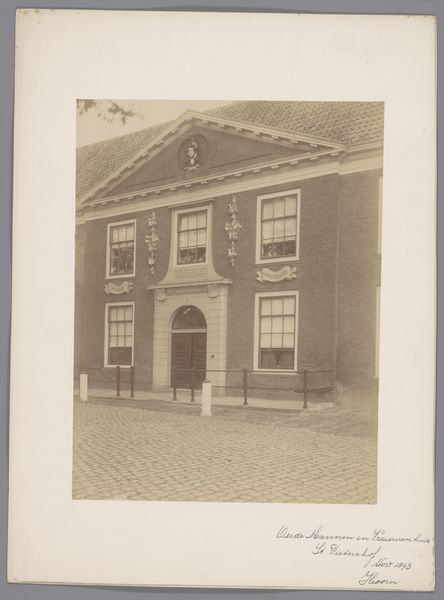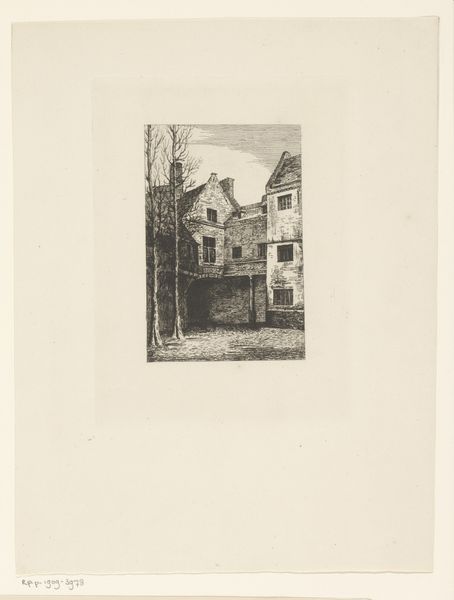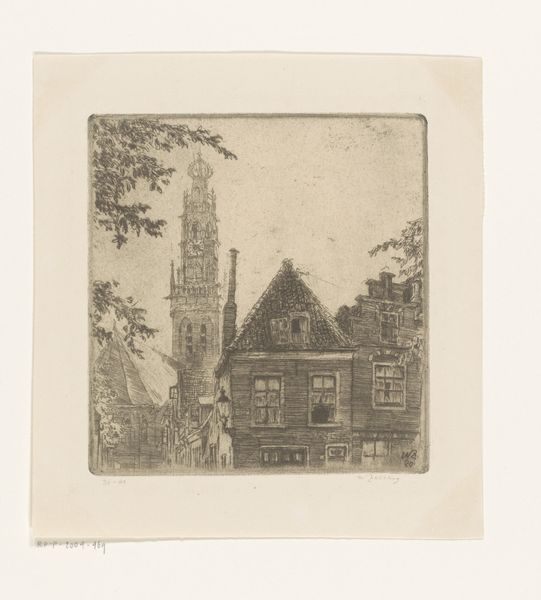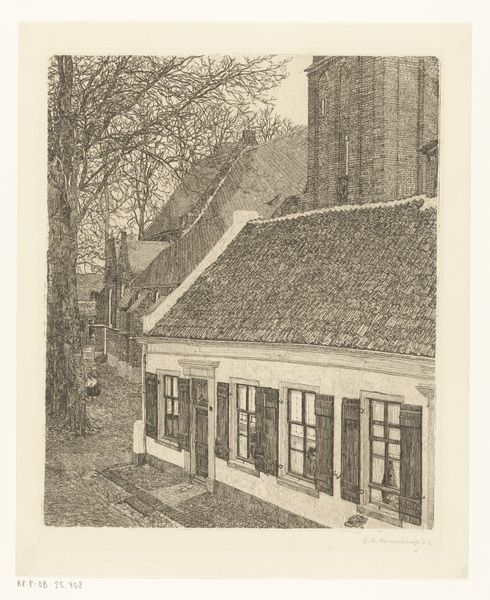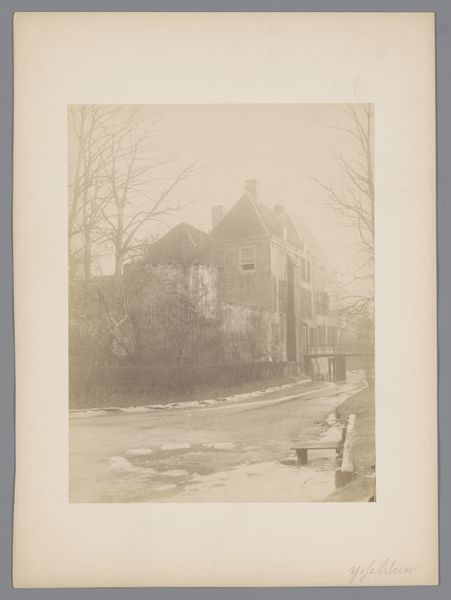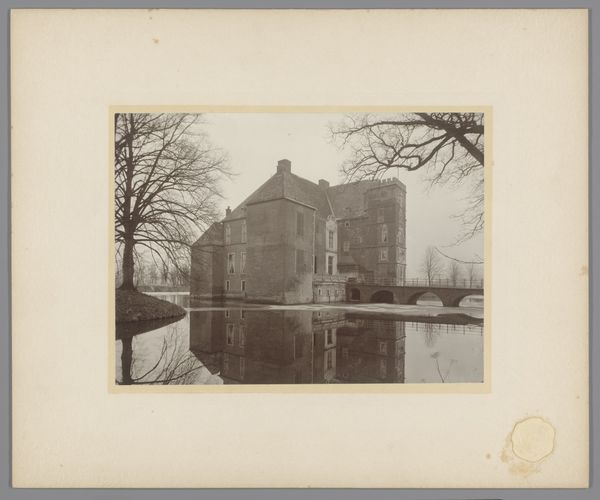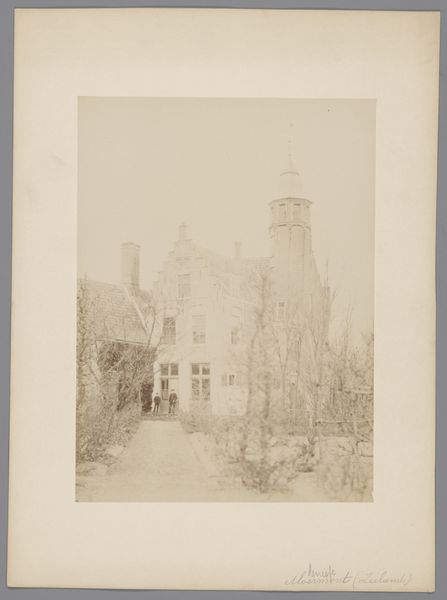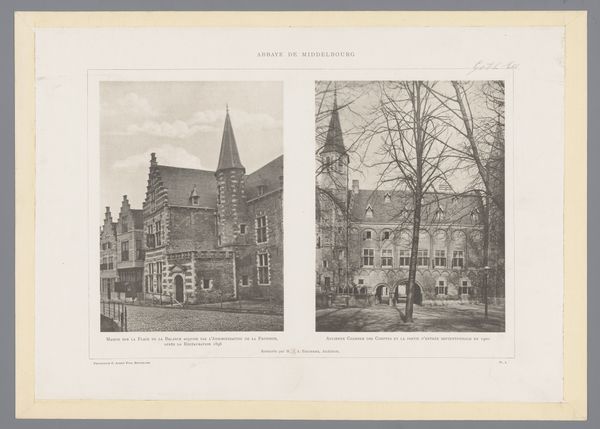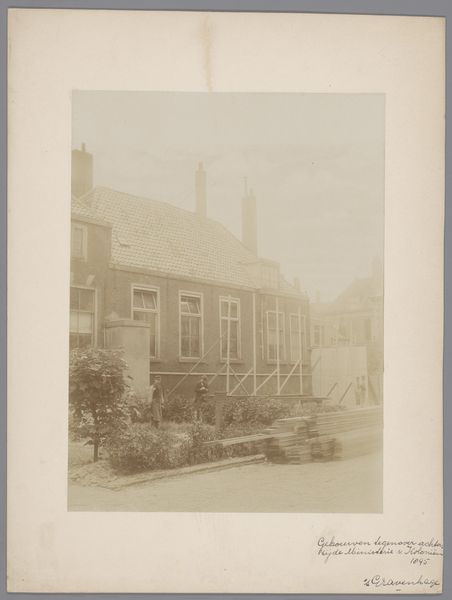
drawing, print, engraving
#
drawing
# print
#
old engraving style
#
landscape
#
cityscape
#
engraving
Dimensions: height 398 mm, width 318 mm
Copyright: Rijks Museum: Open Domain
Curator: This is Gerrit Haverkamp's "Academiegebouw in Leiden," dated between 1882 and 1926, executed as an engraving and a drawing, existing then as a print. The detailed lines and tonal variation really make it. Editor: It’s certainly intricate, almost photo-realistic in its detail. Given your area of expertise, what particularly strikes you about this engraving? Curator: The engraving itself becomes a focal point. Haverkamp meticulously details not just the Academiegebouw but also the environment – the bare tree, the water, even the paving stones. The material labor is evident. How does that act of replicating the Leiden cityscape through such a laborious process, impact the perceived value, the use of that representation? Is it simply to make it viewable for many? How does its potential function play with the material worth, would you say? Editor: That's a very interesting point, framing it as a replication impacting both the material worth and dissemination of knowledge, and hence value. In an age of photography, which was around then, what kind of value was he creating? Curator: Exactly! This connects with debates surrounding mechanical reproduction. This process speaks volumes about labor – the time and skill involved in creating the plate. Also, what is it made out of, this engraving material? Where does it originate from, and how does it contribute or undermine other economies. What relationship to resources do we see exhibited here? Editor: Right, so it's not just the image, but the physical reality, the materiality, and social relations of its production that matters, the labour, the availability of the zinc plate to engrave. All this contributes to understanding its value. Curator: Precisely! Thinking about this as a commodity embedded within a network of social relations. We are invited to ask questions about the conditions of art production, aren’t we? Editor: Absolutely. Considering Haverkamp's work through the lens of materiality offers a whole new level of understanding of what informs art and its appreciation!
Comments
No comments
Be the first to comment and join the conversation on the ultimate creative platform.
